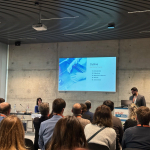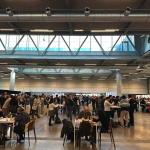
The 38th EFFoST International Conference was hosted by KU Leuven and UGent and it was held in the city of Bruges, in Belgium.
The EFFoST2024 conference explored the theme “Future Food Systems: Innovation through Progress at Scientific Interfaces”.
EFFoST2024 embraced the quintuple innovation helix framework, promoting interdisciplinary collaboration in the food sector. The mission was to advance the global goal of providing safe, nutritious, and sustainable food with broad consumer acceptance, aligning with the ‘one health’ concept defined by WHO.
Participants had the chance to discover the pinnacle of food science and technology at the annual EFFoST conference.
Each year the European Federation of Food Science and Technology (EFFoST) organises this prestigious academic food science and technology conference. Join world-renowned researchers, scientists, policy makers, professionals and students from multi-disciplinary food-related fields to share the latest developments and create new partnerships.
The conference program is available here.
THEROS was represented in the conference by the AuTH-SPECTRA team. Ms. Dimitra Xenitopoulou , Mr. Nikolaos L. Tsakiridis, Mr. Achilleas Panagiotis Zalidis , Ms. Eleni Kalopesa and Mr. George C. Zalidis successfully submitted and presented a poster entitled “Real-Time Detection of Turmeric Adulteration with Metanil Yellow using a Miniaturized NIR Sensor and AI techniques“.
The work showcases a rapid, cost-efficient, and non-destructive method for identifying a synthetic, non-authorized azo dye, MY, in ground turmeric – a step towards ensuring authenticity and safety in the spice supply chain. This methodology, rooted in the THEROS project framework, leverages the capabilities of portable, low-cost NIR spectrometers to accurately capture the spectral fingerprint of turmeric. These spectral signatures are compiled into a comprehensive spectral library, which serves as the foundation for developing advanced machine-learning algorithms. These algorithms transform the spectral data into reliable markers, enabling the precise detection of adulterants and contaminants, such as banned dyes.
The poster is available here.
PHOTO GALLERY






